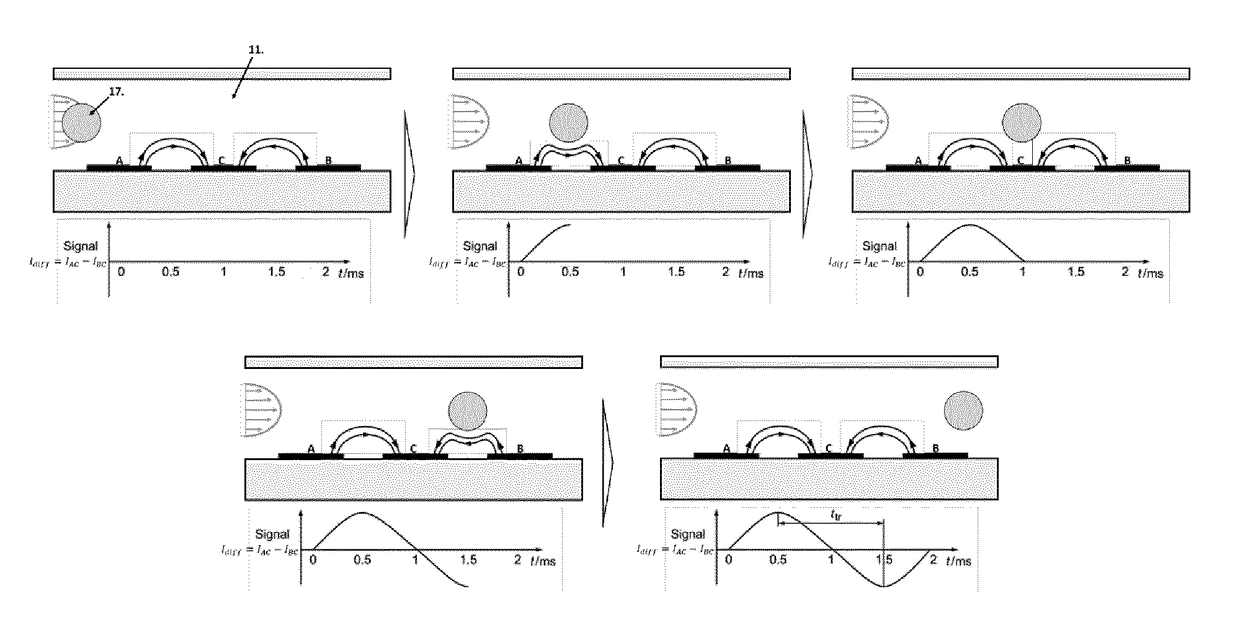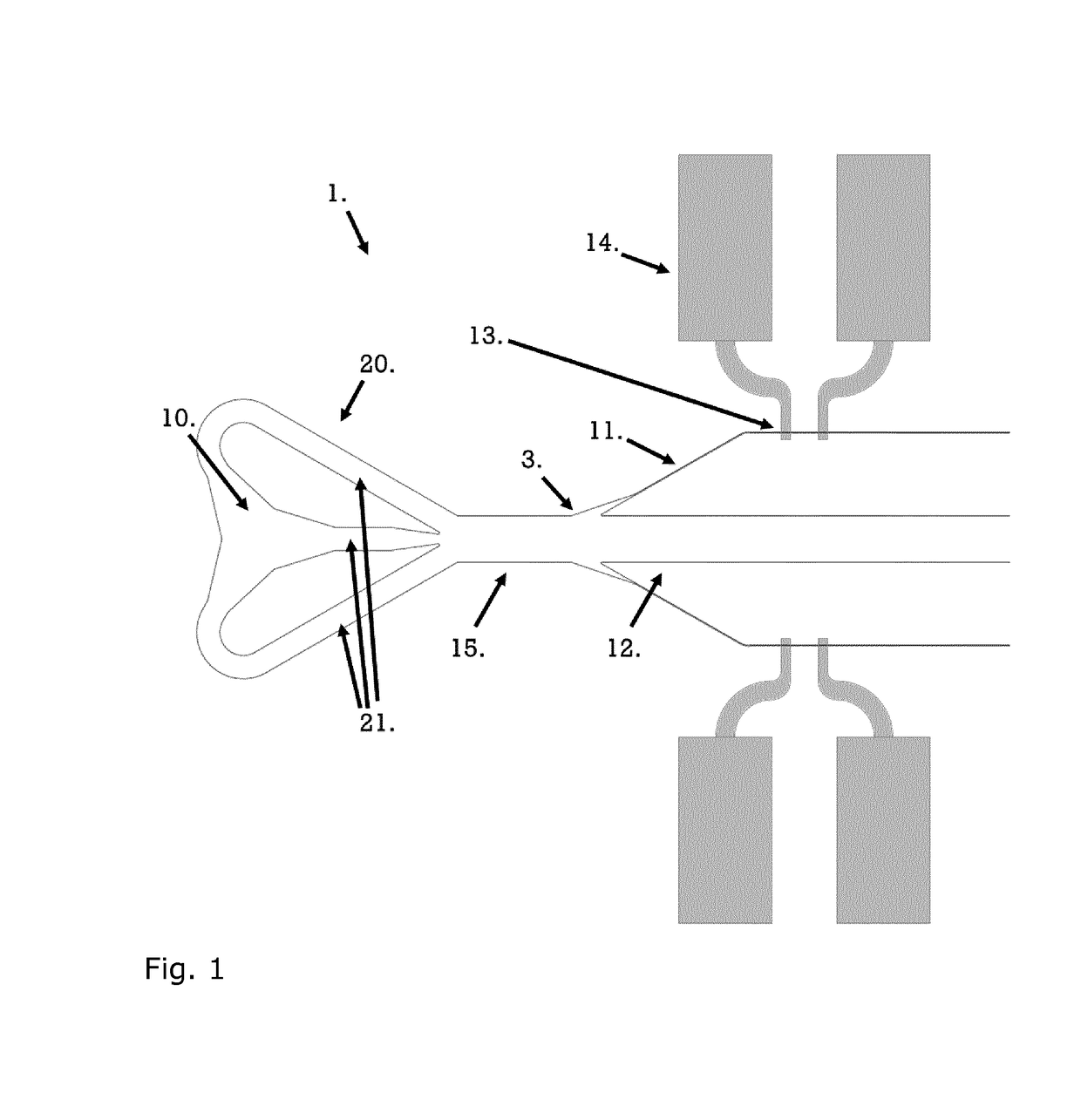Microfluidic particle analysis device
a microfluidic particle and analysis device technology, applied in the direction of material analysis, withdrawing sample devices, instruments, etc., can solve the problems of insufficiently fast technology for drinking water analysis, inability to provide exact quantitative results, and inability to provide fast results in 24 hours, so as to improve the quality of measurement, reduce false positive detection results, and improve the effect of quality
- Summary
- Abstract
- Description
- Claims
- Application Information
AI Technical Summary
Benefits of technology
Problems solved by technology
Method used
Image
Examples
example 1
[0120]To demonstrate proof of concept for the use of bypass channels in an impedance flow cytometer, four designs featuring bypass channels and measuring channels were made. The designs were made similar to system depicted in FIG. 1, but with three coplanar electrodes instead of two. The use of three coplanar electrodes allows for an accurate estimate of the transition time, and thus the flow rate, as the 2 μm polystyrene beads follow the laminar flow. The transition time and resulting flow rate was extracted as the peak-to-peak value in the differential measurement, see FIG. 6. The operational principle of differential measurements allows the impedance flow cytometer to be used as a flow sensor if the liquid has particles that follow the flow. The results are summarised in Table 1 and illustrated in FIG. 8.
[0121]Each design had two measuring channels, each with projected Xmeasuring values of 2%, 5%, 10%, and 20%, respectively, for each microfluidic particle analysis device, and a s...
example 2
[0124]A microfluidic particle analysis device as illustrated in FIG. 5 was fabricated as described above to have a bypass channel with a height identical to the height of the measuring channel.
[0125]A microfluidic particle analysis system comprised a coarse filter (pore size 5 μm), a pressure-inducing unit, a flow-splitter, operating electronics, and the microfluidic particle analysis device. The flow splitter was introduced to increase the flow rate prior to the sample entering the microfluidic particle analysis device. The microfluidic particle analysis device was tested by introducing water to the inlet, and thereby to the measuring channel, and measuring a non-differential current. This value can be used to determine if there is water in the channel or not. Further functionality of the chip can be tested by introducing a known quantity of polystyrene beads (either 1 or 2 μm) and subsequently flushing the device to ensure it is clean and ready for operation, e.g. as outlined in E...
example 3
[0126]A microfluidic particle analysis device as illustrated in FIG. 5 was fabricated. The microfluidic particle analysis device had a bypass channel 12 of approximately 1800 μm length and a width of 500 μm. The length of the measuring channel 11 was about 1920 μm, and its width was 10 μm. The length of the main channel 15 was about 19,200 μm and its width was about 500 μm. All channels had a depth of 10 μm. The angle between the bypass channel 12 and the measuring channel 11, and thereby the angle of the measuring channel relative to the main flow direction, was about 30°. Xmeasuring for this device was 0.008.
[0127]For comparison a device was manufactured where the angle between the bypass channel and the measuring channel was 90° (not shown). This device differed from the device of FIG. 5 and described above by having a measuring channel of about 1320 μm length and 10 μm width, a bypass channel with a length of about 1090 μm and a width of 500 μm, a main channel length of 19,800 μ...
PUM
 Login to View More
Login to View More Abstract
Description
Claims
Application Information
 Login to View More
Login to View More - R&D
- Intellectual Property
- Life Sciences
- Materials
- Tech Scout
- Unparalleled Data Quality
- Higher Quality Content
- 60% Fewer Hallucinations
Browse by: Latest US Patents, China's latest patents, Technical Efficacy Thesaurus, Application Domain, Technology Topic, Popular Technical Reports.
© 2025 PatSnap. All rights reserved.Legal|Privacy policy|Modern Slavery Act Transparency Statement|Sitemap|About US| Contact US: help@patsnap.com



